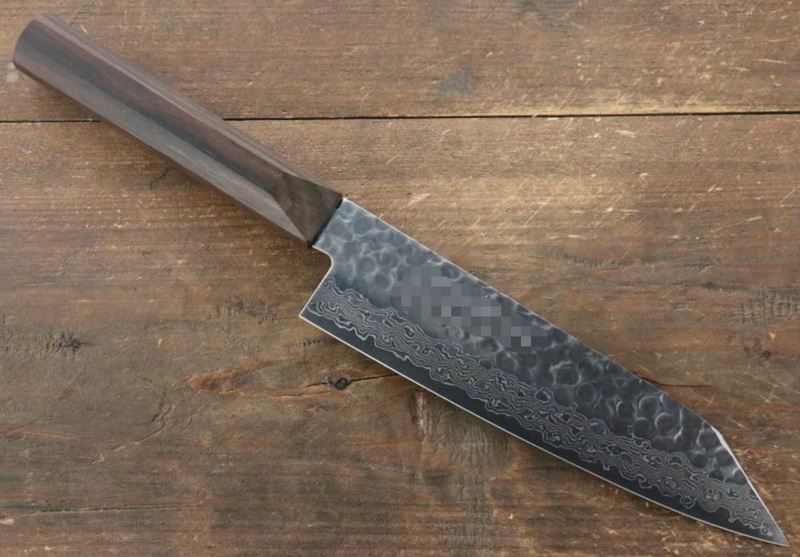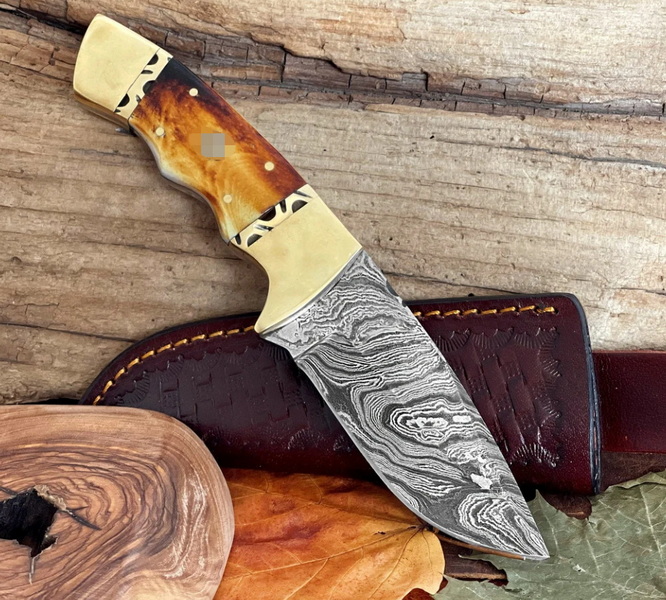- All
- Product Name
- Product Keyword
- Product Model
- Product Summary
- Product Description
- Multi Field Search
Views: 222 Author: Ann Publish Time: 2025-10-16 Origin: Site











Content Menu
● Understanding Damascus Steel and Knives
>> Key Characteristics of Damascus Knives
● How to Visually Identify Real Damascus Patterns
>> 1. Examine the Blade Pattern Carefully
>> 2. Check Pattern Consistency Across the Blade
● Physical Checks to Confirm Authenticity
>> 1. Feel the Weight and Balance
>> 3. Acid Etching Test (Advanced)
● Additional Tips and Cautions
● The History and Craftsmanship Behind Damascus Knives
● How Modern Technology Aids Identification
● Frequently Asked Questions (FAQs)
>> 1. How can I tell if a Damascus knife pattern is real or just printed?
>> 2. Does the pattern always cover the entire blade?
>> 3. Is weight a reliable indicator of genuine Damascus steel?
>> 4. Can I sharpen a Damascus knife like other blades?
>> 5. Are acid tests safe to perform at home?
Damascus knives are highly prized for their distinctive beauty, durability, and craftsmanship. As a Chinese kitchen knife factory providing OEM services to international brands, wholesalers, and manufacturers, knowing how to spot genuine Damascus knives is crucial both for quality assurance and educating customers.
This detailed guide explores key methods to identify authentic Damascus knives, enriched with explanations, practical tips, and safety advice. We include many references to the keyword Damascus Knife throughout the article to maintain clarity and SEO relevance. Visuals and videos illustrating patterns, tests, and craftsmanship techniques are recommended to accompany each section in publication to enhance reader engagement.

Damascus steel is historically renowned for its layered construction achieved by repeatedly forging and folding steel. This produces the characteristic flowing, wavy patterns unique to each blade. Modern Damascus knives often use pattern-welded steel, combining beauty and performance, perfectly suited to kitchen knives requiring precision and durability.
-Multi-layered steel construction
-Organic, non-repeating flowing patterns on blade surface
-Superior sharpness and edge retention
-Unique pattern visible over entire blade
A genuine Damascus Knife features these qualities throughout its blade, tang, and sometimes the handle bolster, though polishing may obscure patterns in certain areas.
Look closely at the blade's surface:
- Authentic Damascus patterns flow naturally with slight variances and resemble patterns like waves, feathers, or ladders.
- Patterns arise from the metal's layered structure, not paint or laser etching.
- No two authentic Damascus knives share an identical pattern.
- The pattern should extend onto the tang and be visible on unpolished areas.
- If the pattern is absent on large sections without reason, or it looks printed, the knife may be fake.
Genuine Damascus knives typically feel heavier and well-balanced due to their layered steel construction.
Try simple slicing tests to judge edge quality:
- Paper test: A real Damascus blade slices paper cleanly.
- Hair shave test: It can shave arm hair gently.
- Tomato slicing: Cuts tomato skin without crushing.
Under expert supervision, the acid test reveals pattern depth:
- Sand a small section to remove surface pattern.
- Apply mild acid (vinegar or ferric chloride) briefly.
- Real Damascus patterns reappear unevenly; fakes fade or stay uniform.
- Beware of knives with overly perfect, symmetrical, or overly colorful layered patterns.
- Polished sections may hide patterns, which is normal.
- Handle knives properly to avoid injury during testing.

To fully appreciate a genuine Damascus Knife, understanding its rich history and complex manufacturing process is essential. Originating from the Middle East around 500 AD, Damascus steel was famed for unmatched strength and cutting ability, forged from iron and carbon combined in a delicate balance. Today's Damascus knives often replicate this ancient technique using modern pattern-welding methods.
The traditional method involves heating steel to around 1600-1700 degrees Celsius, folding it repeatedly to create layers — sometimes more than sixty layers in a single blade. The steel is then annealed (stress-relieved), hardened through quenching, and tempered for toughness. The blade undergoes acid etching to reveal its distinctive layered pattern, which is polished to a shine highlighting its beauty.
Japanese craftsmen apply similar but uniquely artistic techniques to produce Damascus blades that balance aesthetic appeal and functional excellence. They often start with high-quality layered steel and use acid etching to enhance contrasting patterns.
Damascus knives are not only tools but pieces of art representing centuries of metallurgical science and cultural heritage. This craftsmanship adds significant value and demands careful scrutiny to determine authenticity.
Cutting-edge microscopy and metallurgical analysis can identify the layered structures and carbide formations unique to true Damascus steel. Some laboratories analyze layer patterns, grain structure, and material composition to differentiate between genuine and imitation blades effectively. This scientific approach complements traditional visual and physical inspection.
For manufacturers and OEM partners, adopting these advanced testing methods ensures product authenticity and boosts customers' confidence in Damascus knives bearing their brand.
Identifying a genuine Damascus Knife hinges on recognizing the unique, organic patterns born from traditional forging techniques, coupled with physical characteristics like weight, sharpness, and edge retention. Employing visual examination and simple tests enables buyers, sellers, and OEM partners to confidently separate authentic Damascus blades from counterfeits. Always consider expert evaluation for expensive items and promote education to maintain the integrity of Damascus knives in the market.

- Real patterns are organic, non-repetitive, and integrated into the metal layers, unlike printed or laser-etched designs.
- Mostly yes, but polished parts like the bolster may lack visible patterns. Absence in unusual spots warrants suspicion.
- Generally yes, real Damascus knives feel heavier due to layered steel construction compared to fakes.
- Yes, but take care to preserve the patterned surface; professional sharpening is recommended.
- Acid tests should be done cautiously and preferably by professionals because of chemical risks.
The Ultimate Professional Knives for Halal Butchery in Middle Eastern Kitchens
Chef Knife Size Guide: Choosing Between 6″, 8″, 10″, And 12″
Custom Knife Handles: How To Design A Chef Knife That Fits Your Hand Perfectly
Chef Knife Surface Treatments Guide: From Polished Migaki To Damascus Patterns
Inside Our Professional Knife Sample Room: Quality You Can See
Universal Knife Block Buying Guide: Modern Acrylic & ABS Knife Holders for Professional Kitchens
Universal Knife Block: The Complete Guide To Modern, Hygienic Knife Storage
The Complete Guide To Red Handle Knife Sets: Style Meets Functionality in The Kitchen
Professional Knives for Halal Butchery And Middle Eastern Cuisine